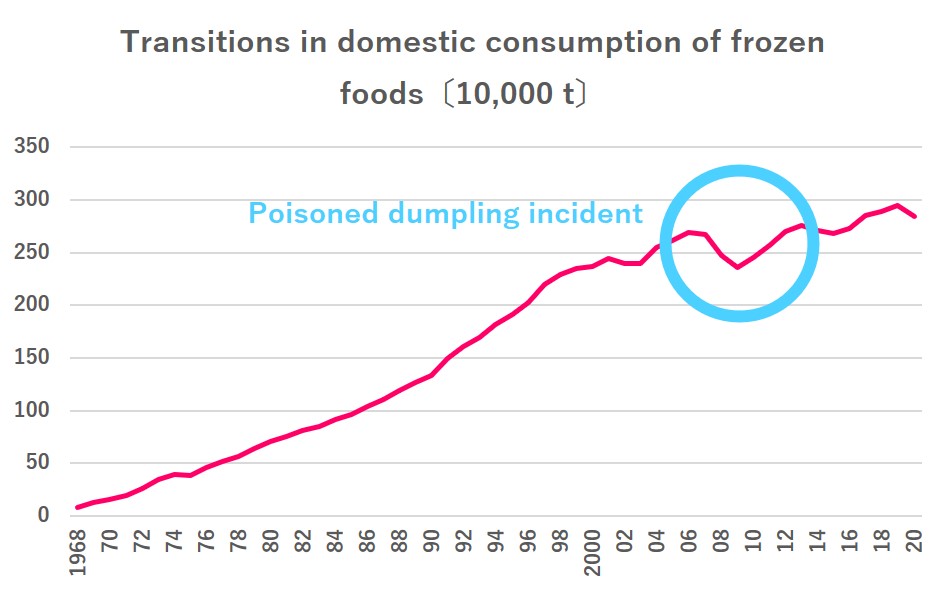Safety Issues
Frozen Food Additives
Types of Main Food Additives
The foods we usually eat may contain carcinogens and additives, and there are many discussions about the dangers. Among them, many food additives are used in Japan. The following are the main food additives and their effects.
| Preservatives | Prevents the increase in bacteria in food, alteration, and decay. |
|---|---|
| Coloring | Color food and cosmetics. |
| Sweetener | Add sweetness to food. |
| Spices | Add aroma to food and hide the smell. |
| Emulsifier | Make sure that water and oil mix. |
In addition to these, there are various additives such as thickeners, stabilizers, and coloring agents
Dangers of Food Additives
Standards for the type and quantity of additives that can be used in food are based on the assessment of the food safety commission and are not very likely to harm the body as soon as they are ingested. In addition, if stored below -18 ° c, bacteria that cause rot and food poisoning cannot be activated, so frozen foods do not require the use of preservatives or alternative food additives. On the other hand, since there has been more than a decade of long-term experiments, absolute safety has not been confirmed. Among them, some foods are dangerous when ingested in large quantities, such as the food additives summarized below.
| Sodium nitrite | Add color to food as a coloring agent. when reacting with amines contained in meat and fish, it changes into a carcinogen. |
|---|---|
| Glycine | Atype of amino acid that improves the life of food. it is said to lead to an overdose of salt. |
| Aspartame | a type of synthetic sweetener with a risk of carcinogenicity, sperm loss, etc. |
| Tar dye/th> | A kind of synthetic coloring. It is a dye extracted from petroleum products and has carcinogenicity and teratogenicity. |
| Sodium glutamate | It is used as an umami component. Disruption of neurons can cause alzheimers and depression. |
Food Poisoning Case
From 2007 to 2008, there was a "poisoned dumpling incident".
Frozen dumplings produced in china were mixed with organophosphate pesticides, and consumers who ate them developed severe poisoning symptoms, making it big news. Although the goods were collected, many people were affected, and it became a major incident that shook food safety and trust in imported foods. At that time, the ministry of agriculture, forestry, and fisheries standards required the labeling of the country of manufacture. Some companies declined to buy Chinese food and frozen foods fell by 30%.

In response to a series of uproar, companies switched to domestic materials, increased domestic manufacturing, and created products that can be reassured by improving quality I tried to. From that time on, the production area of raw materials began to be disclosed in detail. You can check the part that cannot be displayed in the package on the homepage. In addition, the Aji-no-Moto Group is currently working on the theme of "health" in the SDGs with the theme of reducing salt and not using three major allergens, and frozen foods are becoming noteworthy in terms of health.
Anything that enters a person's mouth should never harm one's health. It was also a case where it was understood once again that consumers wanted safety first rather than low prices.
Frozen food is stored below -18°C, so corrosion does not progress and there is no need to put food additives. Even after the "poisoned gyoza incident", to provide safe and secure products to consumers, each company has devised a package that clearly states the country of production. In addition, the Aji-no-Moto Group is also working on the theme of "health" in the SDGs with the theme of reducing salt and not using three major allergens, and frozen foods are becoming noteworthy in terms of health.